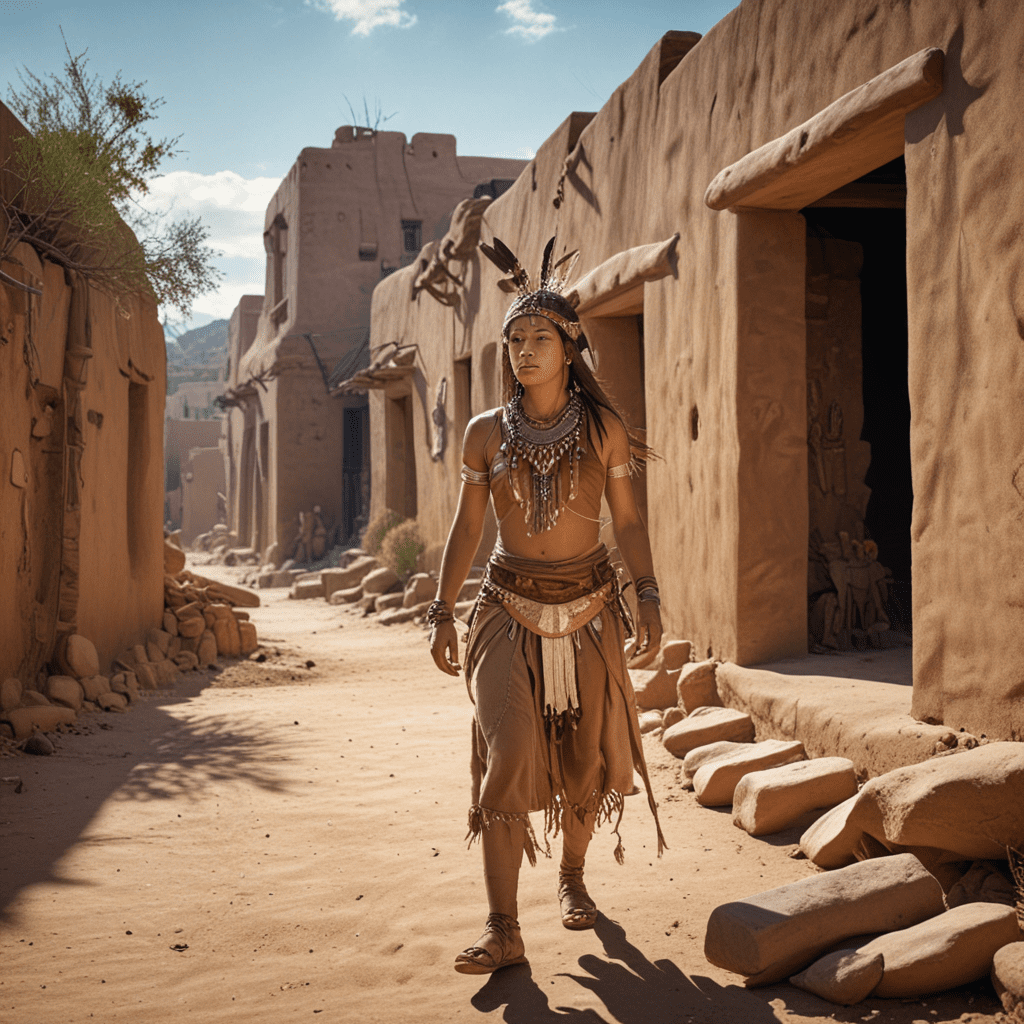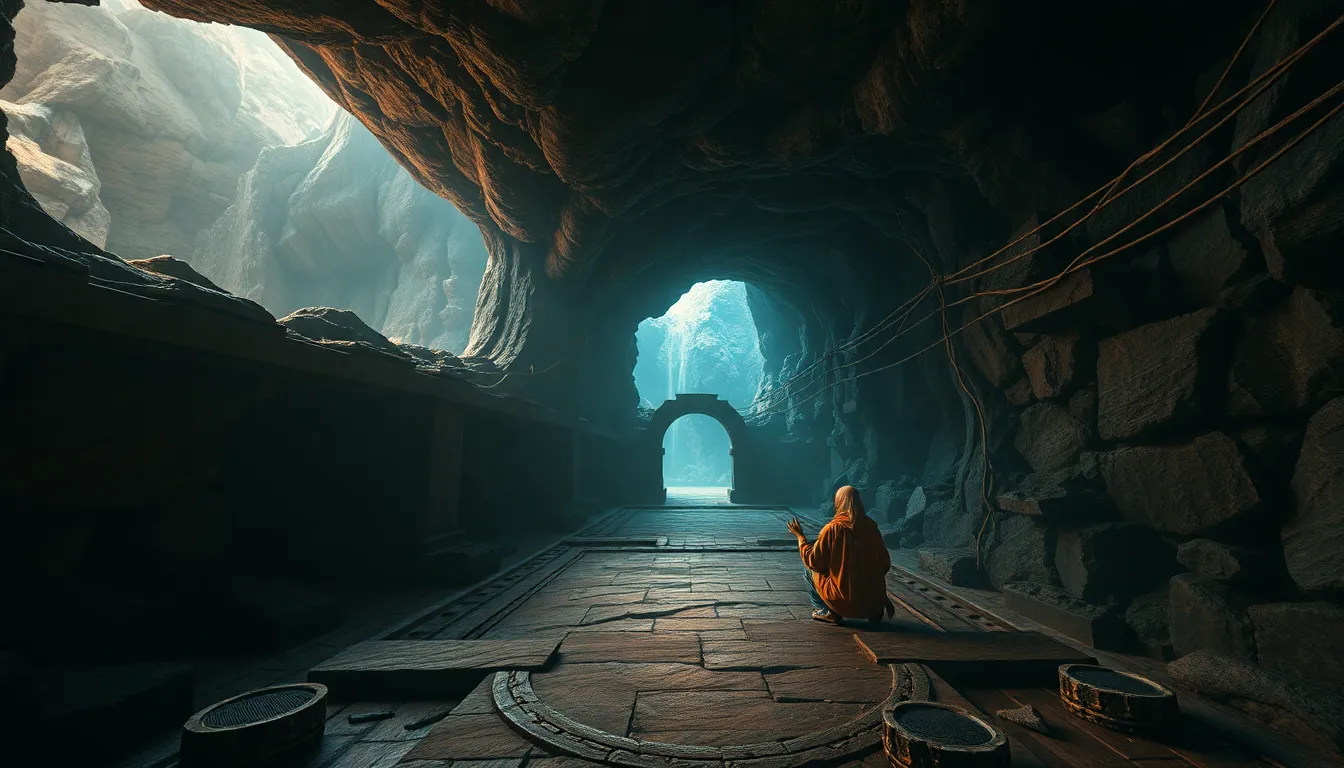1. Origins and Creation Narratives
The Pueblo people believe that the world was created by the Twin Warriors, who emerged from the underworld and created the sun, moon, stars, and all living creatures.
In the beginning, there was only darkness and chaos. Then, the Twin Warriors emerged from the underworld and created the sun, moon, and stars. They also created the first humans, animals, and plants. After creating the world, the Twin Warriors returned to the underworld, but they continue to watch over the Pueblo people.
Below are the primary LSI Keywords for SEO used in this section:
- Pueblo mythology
- Twin Warriors
- Creation story
- Sun
- Moon
- Stars
- Humans
- Animals
- Plants
- Underworld
2. The Holy People and the Emergence
Pueblo people believe in a group of Holy People known as the Kachinas, who are believed to bring rain, fertility, and other blessings to the community.
The Holy People are believed to reside in the San Francisco Peaks north of Flagstaff, Arizona. They are said to come down to the pueblos during the winter months to dance and bring gifts to the people. The Holy People are also believed to help protect the pueblos from their enemies.
Below are the primary LSI Keywords for SEO used in this section:
- Holy People
- Kachinas
- Rain
- Fertility
- Blessings
- San Francisco Peaks
- Flagstaff
- Arizona
- Winter
- Dance
- Gifts
- Protection
3. The Twin Warriors and the Monster Slayer
The Twin Warriors are the most important figures in Pueblo mythology. They are credited with the creation of the world and all living creatures.
The Twin Warriors are also known as the Monster Slayers, because they killed a giant monster that was terrorizing the Pueblo people. The monster was so big that it could eat entire villages in one bite. The Twin Warriors tracked down the monster and killed it with their magical weapons.
Below are the primary LSI Keywords for SEO used in this section:
- Twin Warriors
- Creation
- Monster Slayer
- Giant monster
- Magic weapons
- Villages
4. The Kachina Spirits and Masked Dances
The Kachina spirits are believed to be the spirits of the ancestors. They are often depicted as masked dancers who perform at ceremonies and festivals.
The Kachina spirits are believed to bring rain, fertility, and other blessings to the community. They are also believed to help protect the pueblos from their enemies.
Below are the primary LSI Keywords for SEO used in this section:
- Kachina spirits
- Ancestors
- Masked dancers
- Ceremonies
- Festivals
- Rain
- Fertility
- Blessings
- Protection
5. The Animal Spirits and their Roles
The Pueblo people believe that all animals have spirits, many of whom are connected to specific clans and lineages. They also have a place in the mythology and Pueblo beliefs about the world.
The animal spirits are often depicted in art and pottery. They are also believed to help protect the pueblos from their enemies.
Below are the primary LSI Keywords for SEO used in this section:
- Animal spirits
- Clans
- Lineages
- Mythology
- Art
- Pottery
- Protection
6. The Sun, Moon, and Stars in Pueblo Mythology
In Pueblo Mythology, the Sun, Moon, and Stars play crucial roles as celestial beings with divine power and influence. The Sun is seen as a masculine force, representing warmth, life, and fertility. Meanwhile, the Moon embodies feminine energy, associated with night, dreams, and the growth cycle.
The Pueblo people believe that the Sun and Moon are married and that their union produces the stars. They also hold that the movement of the celestial bodies affects the seasons, harvests, and human activities. Certain constellations and star patterns are seen as guides for farming, hunting, and religious ceremonies.
7. The Importance of Corn and Agriculture
Corn, or maize, holds immense significance in Pueblo mythology and culture. As the primary staple crop, it symbolizes nourishment, sustenance, and the cycle of life. The Pueblo people believe that corn was a gift from the Holy People and that it has a spiritual essence.
Corn is not merely a food source but also a sacred symbol incorporated into various rituals, ceremonies, and art forms. The Pueblo people practice dry farming techniques, relying on rainfall and natural water sources to cultivate their crops. The success of the harvest is seen as a reflection of their relationship with the Holy People and the natural world.
8. The Cycle of Life and Death
Pueblo mythology encompasses a comprehensive understanding of the cycle of life and death. According to their beliefs, death is not an end but a transition to a new realm, often referred to as the “fourth world.” The spirit of the deceased embarks on a journey to the underworld, where it encounters various trials and challenges.
Successful completion of these challenges leads to purification and eventual rebirth into a new world. This cycle of death and rebirth is seen as an integral part of the human experience, aligning with the rhythms of nature and the cosmos. The Pueblo people honor their ancestors through ceremonies and rituals, maintaining a connection with the spirit world.
9. Puebloan Symbolism and Iconography
Pueblo mythology finds expression through a rich tapestry of symbols and iconography, deeply embedded in their art, crafts, and traditions. Geometric patterns, animal motifs, and stylized depictions of deities and spirits convey complex meanings and narratives.
Symbols often represent elements of the natural world, such as clouds, rain, mountains, and plants, reflecting the Pueblo people's deep connection to their environment. Animals, including bears, eagles, and coyotes, are imbued with spiritual significance and serve as guardians, protectors, or messengers from the spirit world.
10. The Legacy of Pueblo Mythology
Pueblo mythology, passed down through generations through oral tradition, stories, and rituals, continues to shape the cultural identity and worldview of the Pueblo people. It provides a framework for understanding their origins, destiny, and relationship with the natural and spiritual realms.
The legacy of Pueblo mythology extends beyond the pueblos themselves, influencing the wider world of art, literature, and popular culture. Contemporary Native American artists and writers draw inspiration from traditional myths and symbols, incorporating them into their creative expressions. This ongoing transmission ensures the vitality and relevance of Pueblo mythology in the modern world.
FAQ
Q: What is the significance of the Twin Warriors in Pueblo mythology?
A: The Twin Warriors are central figures in Pueblo mythology, credited with the creation of the world and all living creatures. They are also known as the Monster Slayers, having defeated a giant monster that threatened the Pueblo people.
Q: What role do the Holy People play in Pueblo beliefs?
A: The Holy People, or Kachinas, are believed to be the spirits of the ancestors. They are said to reside in the San Francisco Peaks and come down to the pueblos during the winter months to dance and bring gifts to the community. The Holy People are also believed to help protect the pueblos from their enemies.
Q: How do the Pueblo people view death?
A: In Pueblo mythology, death is seen not as an end but as a transition to a new realm, often referred to as the "fourth world." The spirit of the deceased embarks on a journey to the underworld, where it encounters various trials and challenges. Successful completion of these challenges leads to purification and eventual rebirth into a new world.



